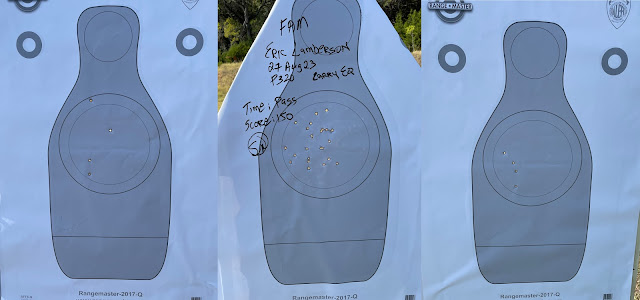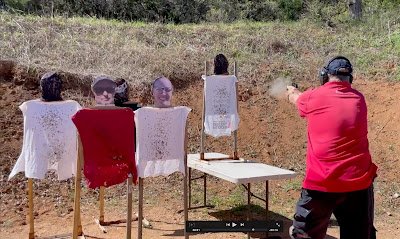 |
| Searching Vehicles |
The resident reported that she heard two gunshots and that she immediately ran, got her kids out of their beds, and onto the floor. Six additional gunshots followed the first two while the resident called the police. When the police arrived, they found shell casings on the caller’s front porch.
When it was all said and done, the thugs had fled and no one was hurt. According to the police, gangs of thugs are searching neighborhoods and looking for unlocked vehicles to ransack or KIA cars to steal. This particular variation of criminal behavior is becoming epidemic in San Antonio, Texas and surrounding cities.
One has to wonder what the truck owner was thinking when he exited his vehicle and confronted the thug. Probably the same thing a number of defenders are thinking when they leap to confront fleeing criminals—NO ONE STEALS MY STUFF!! The defenders certainly are not thinking of the potential life changing consequences of their actions. In this case, the criminal was willing to use deadly force against the truck owner and the owner survived because the thug was a poor shot.
This was not the case in another incident that news organizations widely reported. A man and his female companion exited a shopping mall and the man noticed that his Ford pickup truck was missing. As the pair attempted to locate the truck, they saw it in a nearby parking lot at the same mall with the presumed thugs still sitting in it.
The owner approached his truck, displayed a pistol, and ordered 34 year old Kevin Eric Garcia (the driver) and the Garcia’s 25-year-old female passenger to step outside and sit on the pavement. Moments after the owner called police, Garcia drew a pistol from his waistband and shot the truck's owner. The owner returned fire, hitting, and killing Garcia and critically wounding his companion.
 |
| Police Assisting Garcia's Wounded Companion |
In most states, using deadly force to defend property is problematic at best. Although Texas Penal Code (Title 2, sec 9.41 & 9.42) does permit using force and (under certain circumstances) deadly force to protect or recover property, the consequences faced in doing so can be considerable.
Trying to hold any individual at gunpoint is extremely dangerous—particularly if that individual has a hidden weapon. At least for the moment, the thug knows that you have decided not to shoot; otherwise you would have already fired. That gives him the advantage of being able to plan an immediate response to your inaction. If you are in the open and in close proximity, the thug has a clear (if fleeting) time advantage.
Your ability to react to the thug’s movements come into play as well. The Force Science Institute conducted several experiments in a 2014 study to measure police officer reaction time to start and stop shooting. In experiment one the officers were positioned in a firing stance with a training pistol, finger on the trigger, and were instructed to fire the pistol when a green light came on for 0.5 sec.
On average, it took officers 0.25 sec to begin the trigger pull (i.e. react to the stimulus) and 0.06 sec to complete the trigger pull (defined as the actual travel time of the trigger from a position of rest to a position back against the frame) for a total reaction time of .31 sec. This was when the police officer knew he was about to fire. (Lewinski, Hudson, & Dysterheftt (2014). Police Officer Reaction Time to Start and Stop Shooting: The Influence of Decision-Making and Pattern Recognition. Law Enforcement Executive Forum 14(2), 1-16).
If you are trying to hold someone at gunpoint, your reaction time in response to the thug’s movement will be much greater than 0.31 seconds because you must not have your finger on the trigger until you have made a conscious decision to intentionally fire a shot. Your reaction time will likely be closer to .50 to .75 seconds at a minimum and this assumes that you see and react to the thug’s movement the instant it occurs. If you are multi-tasking and calling 911, looking around for other threats, or dealing with other distractions, bystanders, etc. your reaction time will be much longer.
If you are going to try and take someone at gunpoint, it is critical that you do so from a position of cover if at all possible. While true cover is sometimes difficult to find, anything is better than standing in the open. Even if such material does not stop a bullet, it may deflect it or slow it down and reduce its wounding potential.
Massad Ayoob tells us that, in general, very few criminals dismiss or defy an armed citizen holding them at gunpoint – they tend to believe that citizens are more willing to shoot than the police. That implies that only irrational subjects with an emotional disturbance, a death wish, or extreme hatred/disdain of the armed citizen in question will defy commands at gunpoint. That does not mean they won’t try something as shown in this example.
Perhaps an even better solution is to tell the thug to depart. While it may grate on our conscience (HE STOLE MY STUFF!!), it is clearly preferable to being shot. Unless you are a police officer, you have no duty to try and hold the thug(s) for the police. Once again the thug’s reaction may be irrational. He may decide that you fear to shoot him and may start or resume threatening behavior so be prepared for such a reaction.
If you find these useful, please follow via the link in the upper right.

























